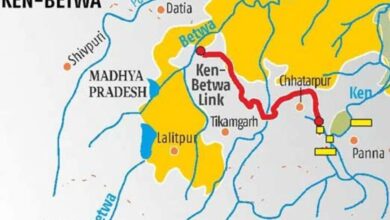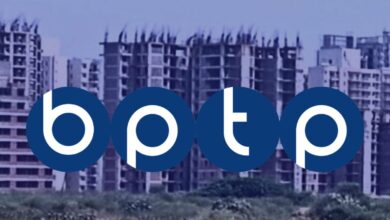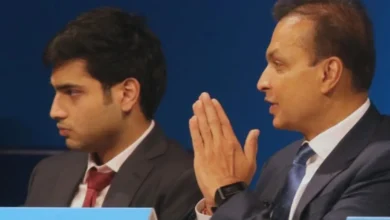Building highways for growth, a good step?

The Budget of 2021 was claimed as a budget of infrastructure by the government of India, rather than investing in development services like education, the government said in the budget that it will increase the expenditure on infrastructure. It has been predicted that the argument of Earth will multiply the effect as these investments bear fruit.
Roads, Transport and Highways Ministry is an example, where an increase from Rs.92,000 crores in the last year to Rs. 1,18,000 crores this year has been seen in the budget, which is around a 30% increase as compared to the last year’s budget. As roads have become one of the very important transportation means and it is very important for the economic and the social wellbeing of the people. Census data tells us that about 27% of people use public transport for travelling and over 12% of secondary school children travel to school more than 5 kilometres away. The percentage for the students which has been given above is more than 40% for college students. Road connectivity is also known to increase economic activity and expand employment opportunities.
What are the results of more investments?
The Budget documents thankfully provide an outcome framework and a list of the achievements in the previous year. We can notice that this year there is 12,000 km of highways. Of the 2,500 kilometres promised last year, 237 kilometres of roads came in full. Contracts have been issued for the rest of the duration.
Economists and entrepreneurs can look for kilometres and crores of rupees, but people, in general, want “mobility”. Sadly, the Outcome Framework does not include this term or any appropriate metric in the ministry’s research agenda. In all cases, this particular detail should have escaped attention, with an allocation of Rs 30 crore last year or about 0.05% of its expenses.
Two simple indices have been proposed here for measuring the condition of the road network. They are:
- The Mobility Index (MI), which measures the typical journey’s average speed, and
- (ii) the EDI that is the distance to the straight-line distance ratio
The former measures road quality and congestion while the latter measures the road network’s connectivity and density. With the advent of an on line map service, these indicators can be calculated at near-zero costs, otherwise, 0.1% of the Department’s outlay could have been fully measured.
At 10 a.m. on a weekday, the Road Ministry uses the service of Google Maps to estimate the distance and the travel time between the two locations using one’s own car. Within a given area, we do this for a collection of main cities and towns, as well as a random selection of villages. We compute the indices for three states based on this basic strategy: Uttar Pradesh, Maharashtra, and Tamil Nadu.
The fact that the roads in an area are controlled by various bodies — the municipality, the state government, and the federal government — is crucial. We divide the collection of location-pairs into three categories: rural (village to village), district (village to district place), and intercity (district place to a major city).
The MI (Mobility Index) is measured in kilometres per hour (kmph), whereas the EDI (Excess Distance Index) is a ratio that will always be greater than one. Thus, a MI of 33 kmph and an EDI of 1.2 for an area indicates that the average speed of a journey is 33 kmph and the straight line-path is approximately 20% shorter than this path.
We can see that Tamil Nadu is 4-8 kmph ahead of the other two states in terms of mobility, and this is valid at all speeds. It’s no wonder that it’s a preferred destination for industries, with intercity speeds of 52 kmph. It also means the continuity of a long-standing tradition of high-speed intercity public bus service. The industrial belt connecting Chennai, Kanchipuram, and Vellore appears to be the only bottleneck. Reduced speeds are also evident in the districts bordering the Nilgiri mountains.
Rural speeds of 33 kmph in Maharashtra, and that too in one’s own car, highlight the misery of rural life. In most parts of the province, intercity mobility is less than 40 kilometres per hour. The only exceptions are National Highway 361 from Solapur to Wardha and portions of National Highway 48 between the city of Pune and Bengaluru and at all levels, the tribal district of Nandurbar is the most backward. Congestion in Thane and Raigad is a product of the city’s proximity to Mumbai, as well as heavy industrial traffic.
With a few exceptions, rural and district speeds in Uttar Pradesh vary from 30-35 kmph, while intercity speeds range from 40-45 kmph. At all stages, the areas surrounding Gorakhpur and Azamgarh have low mobility. The Sitapur-Lucknow-Kanpur corridor (NH 27 and 30) and areas bordering the NCR do much better than the rest of the state in terms of intercity traffic.
The fact that Tamil Nadu outperforms Maharashtra and Uttar Pradesh in most road-related indicators is unsurprising. Tamil Nadu has a higher per capita state domestic product, far more non-farm employees of both genders, and far more women travel than Maharashtra and Uttar Pradesh. Nonetheless, between 2014 and 2018, both Uttar Pradesh and Maharashtra earned roughly 40% more per capita investments.
So, roads and welfare are about more than just income! And, unless caution is exercised, the infrastructure budget may well devolve into a subsidy and service budget, albeit for a different demographic.




